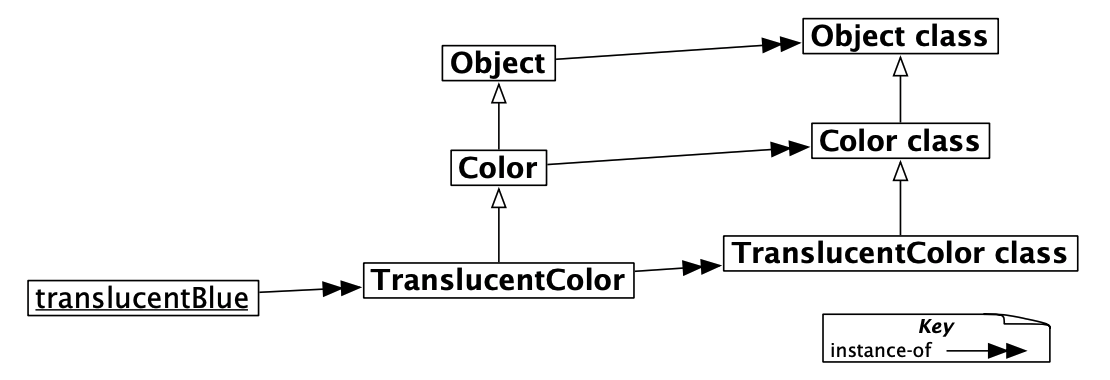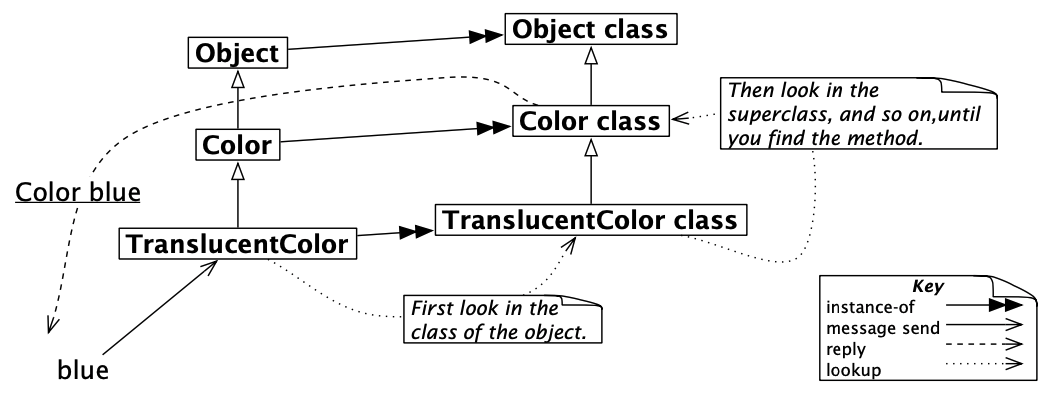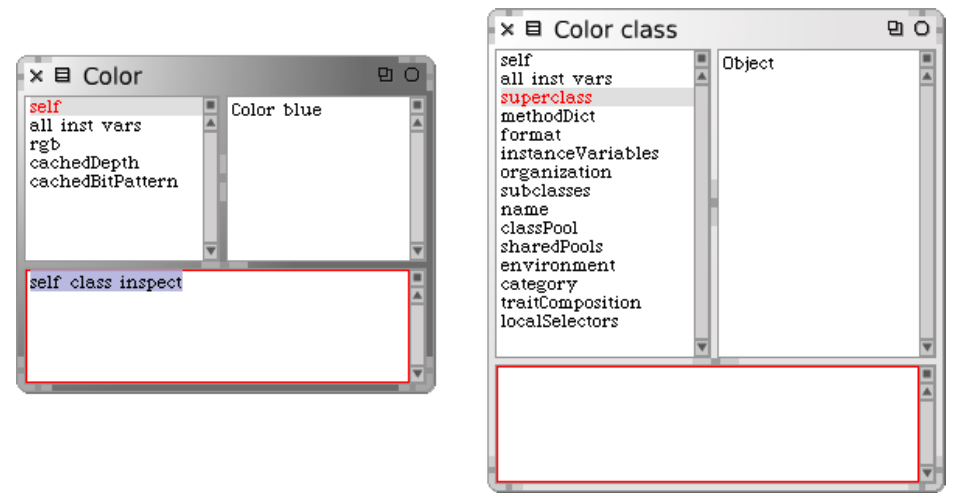12.4: The Metaclass Hierarchy Parallels the Class Hierarchy
- Page ID
- 36399
Rule 7 says that the superclass of a metaclass cannot be an arbitrary class: it is constrained to be the metaclass of the superclass of the metaclass’s unique instance.
TranslucentColor class superclass → Color class TranslucentColor superclass class → Color class
This is what we mean by the metaclass hierarchy being parallel to the class hierarchy; Figure \(\PageIndex{1}\) shows how this works in the TranslucentColor hierarchy.

TranslucentColor class → TranslucentColor class TranslucentColor class superclass → Color class TranslucentColor class superclass superclass → Object class
Uniformity between Classes and Objects. It is interesting to step back a moment and realize that there is no difference between sending a message to an object and to a class. In both cases the search for the corresponding method starts in the class of the receiver, and proceeds up the inheritance chain.
Thus, messages sent to classes must follow the metaclass inheritance chain. Consider, for example, the method blue, which is implemented on the class side of Color. If we send the message blue to TranslucentColor, then it will be looked-up the same way as any other message. The lookup starts in TranslucentColor class, and proceeds up the metaclass hierarchy until it is found in Color class (see Figure 12.5).
TranslucentColor blue → Color blue
Note that we get as a result an ordinary Color blue, and not a translucent one — there is no magic!
Thus we see that there is one uniform kind of method lookup in Smalltalk. Classes are just objects, and behave like any other objects. Classes have the power to create new instances only because classes happen to respond to the message new, and because the method for new knows how to create new instances. Normally, non-class objects do not understand this message, but if you have a good reason to do so, there is nothing stopping you from adding a new method to a non-metaclass.

Since classes are objects, we can also inspect them.
\(\bigstar\) Inspect Color blue and Color.
Notice that in one case you are inspecting an instance of Color and in the other case the Color class itself. This can be a bit confusing, because the title bar of the inspector names the class of the object being inspected.
The inspector on Color allows you to see the superclass, instance variables, method dictionary, and so on, of the Color class, as shown in Figure \(\PageIndex{3}\).



